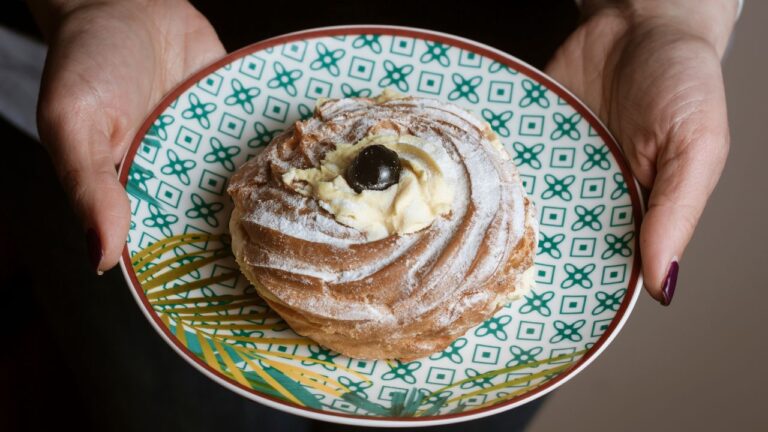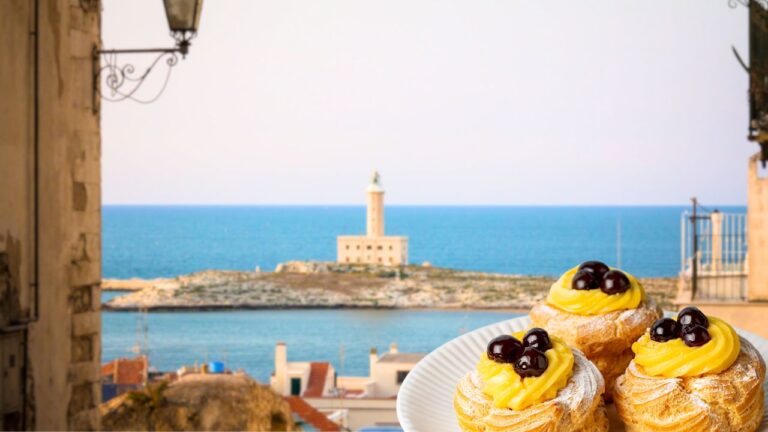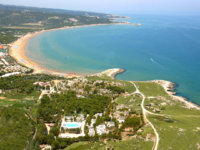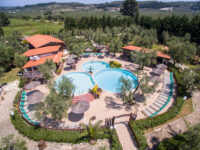The tradition of Zeppole di San Giuseppe, an iconic dessert of Southern pastry making, has its roots in the culture and customs of Southern Italy, becoming a symbol of celebration and conviviality. In particular, Puglia and Campania boast a long history in the preparation of this dessert, with variations that are enriched with local nuances.
A celebration with a long history
The Zeppole of San Giuseppe and the significant date of March 19th are part of a much broader historical and cultural context, which transcends the mere religious celebration or Father's Day.
The period between the end of winter and the beginning of spring is closely linked to the agricultural purification rites of Roman origin, during which it was traditional to light bonfires to burn the brushwood and symbolically a piece of winter, welcoming Spring also through ancient rites of propitiation and fertility.
These fires were occasions during which the communities also gathered to share pancakes covered in honey, precursors of the modern zeppole of San Giuseppe, fried in boiling lard and accompanied by wine and ambrosia.

These holidays, dedicated to Bacchus and his teacher and companion in celebration, Silenus, were prohibited by Emperor Theodosius II, who outlawed pagan cults. As also happens with celebrations of the deceased and Marian feasts, these pagan traditions were somehow assimilated and preserved by Christianity, which established the feast of Saint Joseph at the turn of the spring equinox, thus perpetuating ancient customs through new celebrations, such as the Fanoja of San Giuseppe.
The origins of San Giuseppe zeppole
According to some popular traditions, after having had to flee to Egypt with little Jesus and Mary, Saint Joseph found himself in need of selling pancakes to financially support his family in a foreign land.
The history of the real Zeppole di San Giuseppe is intertwined with that of the ancient Kingdom of Naples. Various hypotheses attribute its invention to religious communities such as the nuns of San Gregorio Armeno, Croce di Lucca or dello Splendore. The first written documentation of the Zeppole di San Giuseppe recipe dates back to 1837, in a treatise on Neapolitan cuisine by Ippolito Cavalcanti.
In addition to Puglia and Campania, zeppole are a fixed element of the celebrations of San Giuseppe also in Calabria, Sicily, and in many other regions of the South, prepared on special occasions and holidays to bring families and friends together around laid tables. Furthermore, their presence on the menus of bars and pastry shops throughout the year testifies to how much they are rooted in the culinary culture of the South and loved by adults and children.
The Recipe and Variations
Zeppole di San Giuseppe are prepared with simple but essential ingredients: flour, sugar, eggs, butter and olive oil, enriched with custard, icing sugar and black cherries in syrup for decoration. Traditionally, the zeppole are fried and garnished with custard and black cherries in syrup, with a final sprinkling of icing sugar.
Even in Puglia, Zeppola is prepared in a particular way during the feast of San Giuseppe, becoming the typical dessert of the holiday and the homage to fathers on Father's Day. The traditional Apulian zeppola stands out for being fried in lard, following a recipe that includes water, lard, salt, flour and grated lemon, as well as eggs. Zeppole are filled with custard and traditional black cherries in syrup, although variants with chocolate or oven-baked versions are also widespread, which are decidedly healthier.
Accompanied by a glass of Moscato di Trani fresh, they offer a unique tasting experience.
Zeppole di San Giuseppe are not just a dessert, but represent a true symbol of celebration, tradition and conviviality which, every year, on March 19th and beyond, brings a little piece of culinary history to be preserved and passed down. Whether fried or baked, classic or innovative, Zeppole continue to be a staple of St. Joseph's celebrations, inviting reflection on the cultural and culinary roots that define Italian cultural identity.


 Turismovieste.it is created by
Turismovieste.it is created by 

















